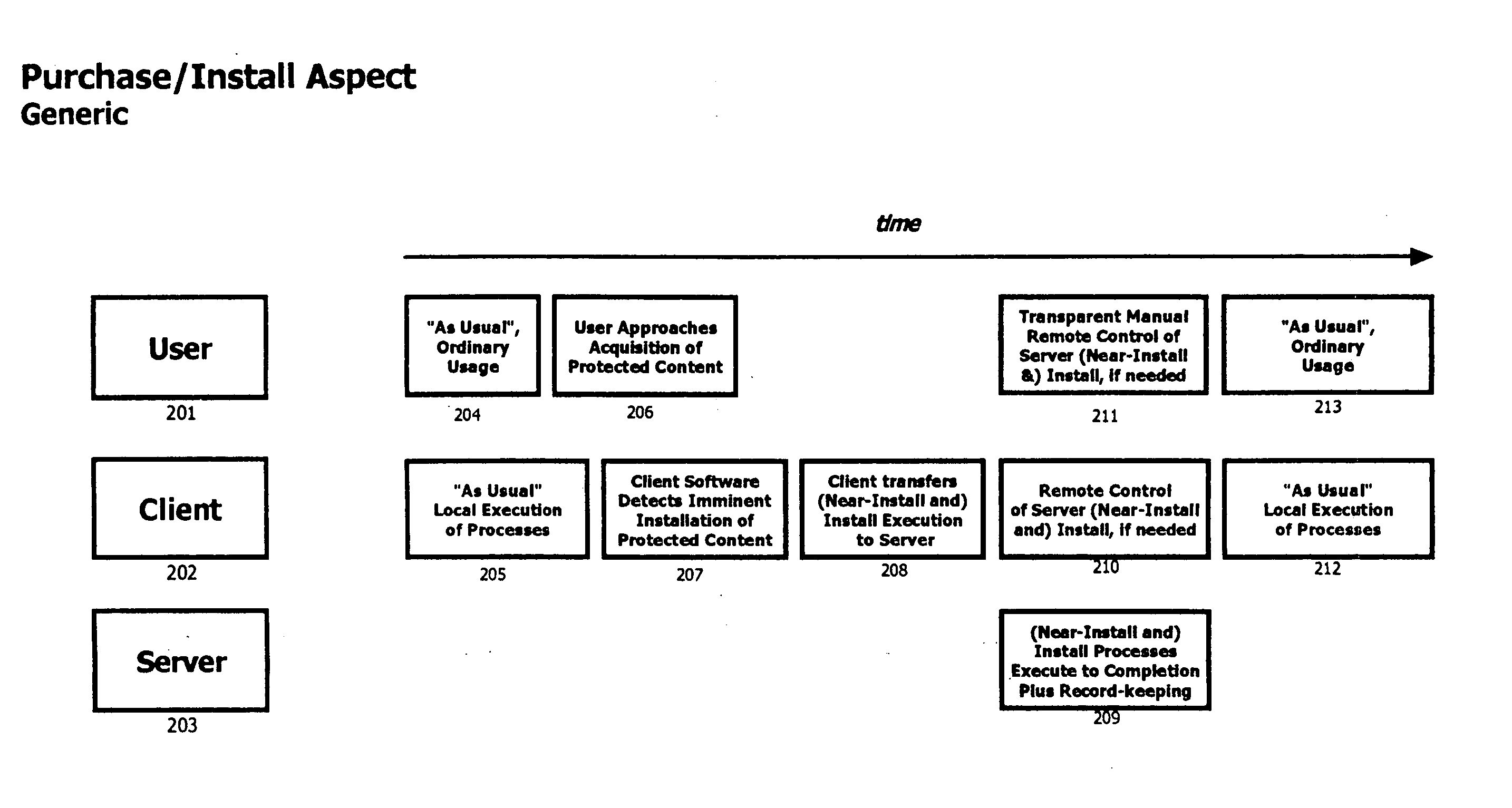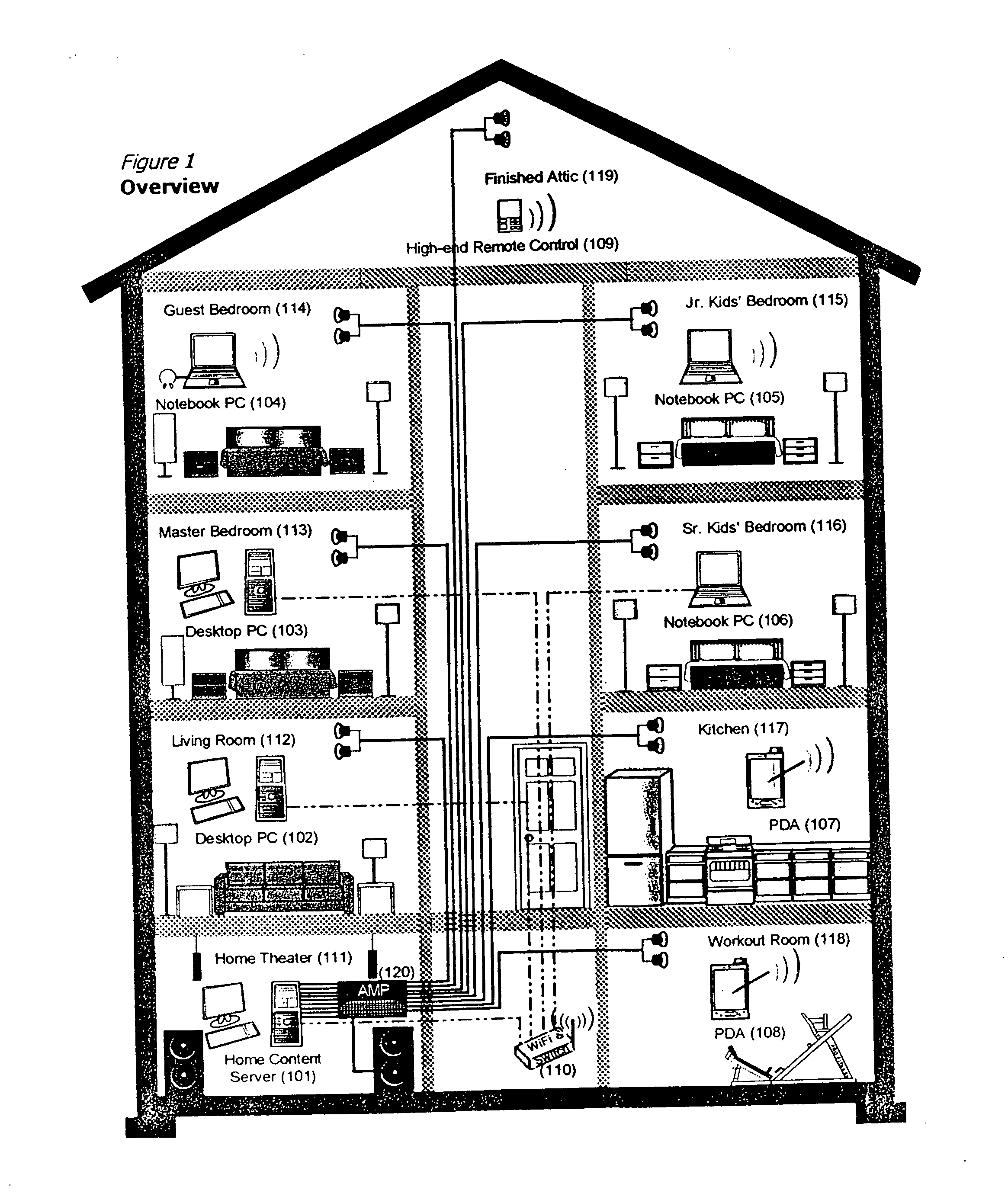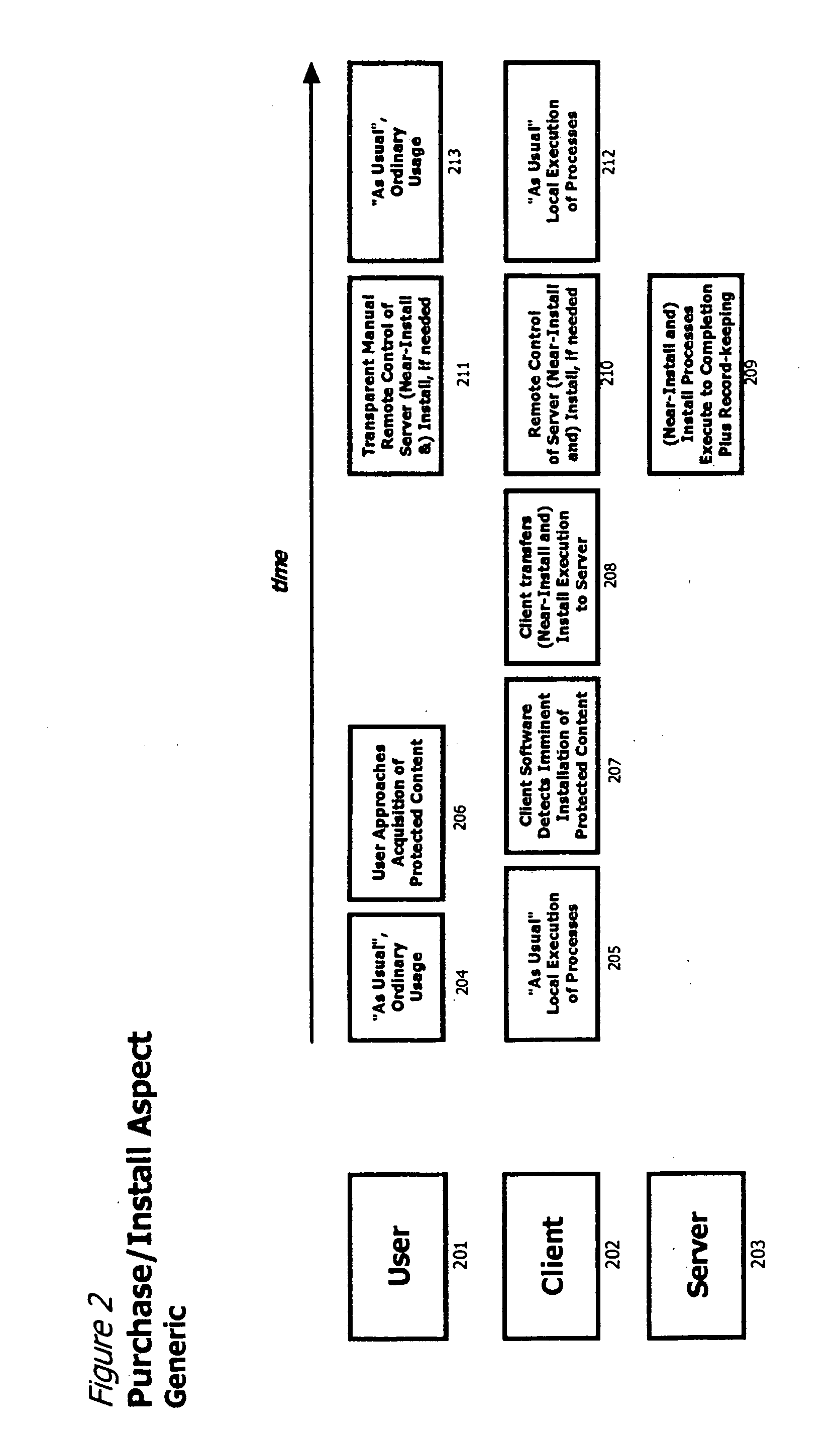Content management system and method for DRM enforcement in a client-server system
a content management system and client-server technology, applied in the field of content management system and method for drm enforcement in a client-server system, can solve the problems of limiting the quantity of systems, limiting the chronological duration of the content's availability, limiting the quantity of playback,
- Summary
- Abstract
- Description
- Claims
- Application Information
AI Technical Summary
Benefits of technology
Problems solved by technology
Method used
Image
Examples
Embodiment Construction
FIG. 1—Overview
[0027]FIG. 1 depicts a typical content, or media, server and an array of clients connected via various wired and wireless links in an exemplary home environment. The system of FIG. 1 can be operated under software control in accordance with the invention to function not only as a conventional multizone music localcasting system (MZMLS), but also to more effectively manage protected digital content. Important details are provided in subsequent figures, but this overview is offered to provide a high-level illustration of what's happening, so that the lower level details can be more readily understood.
[0028] A content server (101), any suitably powerful and capacious desktop or even notebook computer, is the storage and processing center for all content (music & video, e-books, software) and settings (licenses, library indices, purchase records, playlists, user profiles, etc.). It processes I / O over the home's local area network and also outputs audio via a multichannel...
PUM
 Login to View More
Login to View More Abstract
Description
Claims
Application Information
 Login to View More
Login to View More - R&D
- Intellectual Property
- Life Sciences
- Materials
- Tech Scout
- Unparalleled Data Quality
- Higher Quality Content
- 60% Fewer Hallucinations
Browse by: Latest US Patents, China's latest patents, Technical Efficacy Thesaurus, Application Domain, Technology Topic, Popular Technical Reports.
© 2025 PatSnap. All rights reserved.Legal|Privacy policy|Modern Slavery Act Transparency Statement|Sitemap|About US| Contact US: help@patsnap.com



